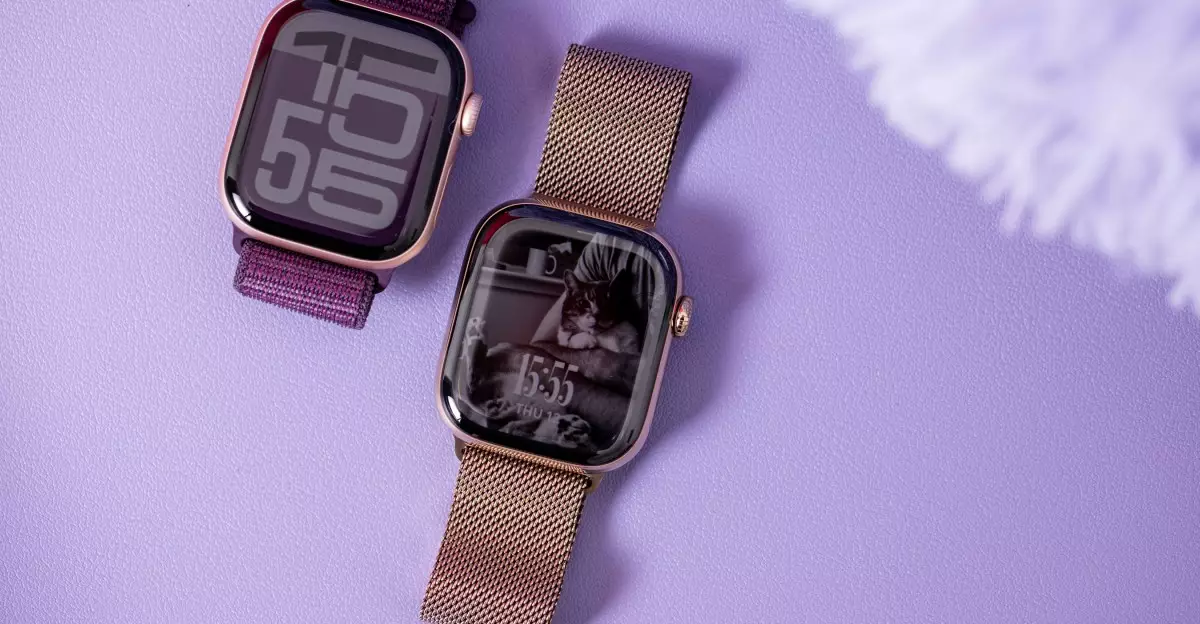In a stunning revelation, Apple has set its sights on introducing innovative AI-powered wearables equipped with cameras by 2027, according to Bloomberg’s Mark Gurman. This revelation signals not just an incremental step but a paradigm shift in the way we perceive wearable technology. With the incorporation of advanced capabilities like Visual Intelligence, Apple is poised to redefine the interaction between users and their devices, setting a new benchmark in the tech landscape.
Intriguing Features on the Horizon
The anticipated integration of cameras into the Apple Watch is transformative. Gurman details that while the standard Series Watch will have cameras embedded within its display, the Apple Watch Ultra will showcase a more accessible side-mounted camera. This strategic design facilitates a form of “augmented perception,” whereby the smartwatch could “see” and interpret its environment. Such functionalities could lead to all sorts of applications—from smarter event management to enhanced navigation—when combined with sophisticated algorithms powered by AI.
The range of features enabled by these wearables extends beyond mere image capture. The Visual Intelligence capabilities were initially presented on the iPhone 16, allowing users to seamlessly merge real-world information with their digital lives, such as automatic calendar entries based on event flyers. Apple aims to harness these features and expand their utility through in-house AI models, distancing themselves from reliance on competitor technologies and further solidifying their market position as innovators.
Integration with Other Devices
Apple’s strategy doesn’t halt with the Apple Watch; there’s a tantalizing prospect of camera-equipped AirPods entering the scene as well. This suggests a harmonized ecosystem where audio and visual functions coexist, enhancing the user experience significantly. Individuals could engage in immersive experiences where sound and sight can be curated together, leading to groundbreaking applications for communication, education, and even fitness.
According to Gurman, these ambitious developments hinge significantly on the leadership of Mike Rockwell, who has been charged with rejuvenating the delayed Siri LLM upgrade. Rockwell’s leadership has been pivotal, previously steering the Vision Pro initiative, and now he assumes responsibility for the AI trajectory of these upcoming wearables. The exciting prospect of visionOS suggests that Apple’s journey into augmented reality (AR) is not far behind, potentially tying into the company’s long-term vision of integrated, AI-centric technology.
Strategic Implications in Tech
The direction Apple is taking not only demonstrates its commitment to innovation but illustrates a broader understanding of how technology will become seamlessly embedded in our daily lives. As machine learning and AI continue to evolve, the ability of devices to process and interpret information—which Apple now aspires to achieve—will revolutionize user interaction.
Such innovations will undoubtedly raise critical questions about user privacy, data security, and the ethical implications of devices that “see” and learn from the world around them. How Apple navigates these challenges will be as important as the technology itself. The anticipated release of these devices could either cement or challenge Apple’s status as a market leader, depending upon how they balance innovation with responsibility.
In a rapidly changing tech landscape, Apple’s foray into AI wearables shines bright, hinting at possibilities we have yet to fully grasp. This upcoming evolution could lead to a world where our devices not only accompany us but understand and integrate into our lives in profound ways.


Leave a Reply